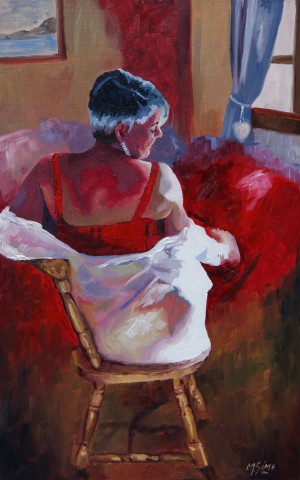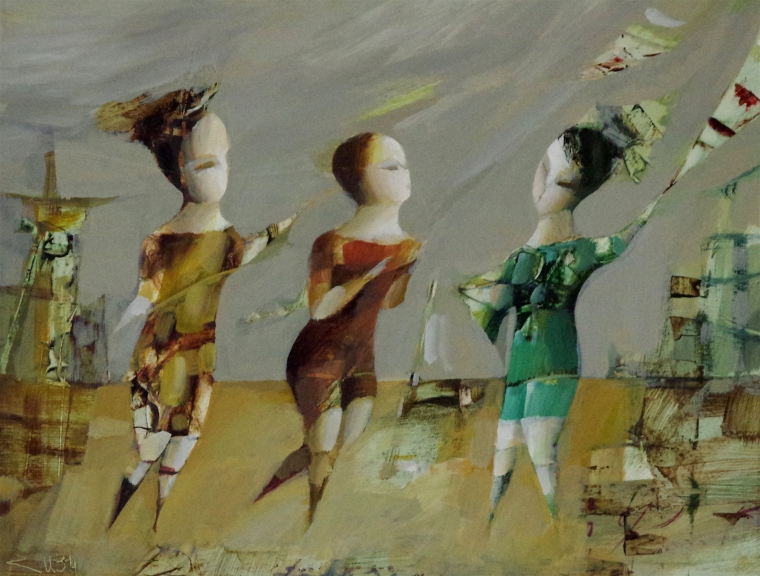Figurative Oil Painting: From Idea to Canvas - A Step-by-Step Method
Figurative Oil Painting: From Idea to Canvas - A Step-by-Step Method
Blog Article
The Evolution of Figurative Oil Paint: Comprehending Its Historical Value and Modern Interpretations
The development of figurative oil paint offers as a compelling lens via which to analyze the interaction in between imaginative expression and historic context. Contemporary musicians, drawing from this rich heritage, are currently reinterpreting the human number in ways that test conventional stories.
Beginnings of Figurative Oil Painting
The origins of figurative oil painting can be traced back to the early Renaissance in Europe, especially in the 15th century. This period marked a substantial departure from the level depictions and stiff kinds particular of medieval art. Artists started to discover naturalism, emphasizing the human figure and its psychological expression. The growth of oil paint enabled higher deepness of shade and information, enhancing the realism and vibrancy of their job.

In this transformative era, figures were often depicted within contextually abundant atmospheres, showcasing not only their physical characteristics but additionally their emotional states. Pioneers such as Jan van Eyck and Titian utilized the medium's convenience, using layering methods to achieve luminance and appearance. This advancement helped with the portrayal of detailed materials and the subtleties of skin tones, adding to the growth of portrait and narrative scenes.
Moreover, the Renaissance emphasis on humanism cultivated a recognition for individuality, which in turn affected artists to develop more relatable and vibrant numbers - figurative oil painting. Therefore, metaphorical oil painting arised as a powerful lorry for storytelling and psychological interaction, preparing for future creative movements and styles
Trick Historical Activities
Significant historic movements have actually formed the development of metaphorical oil painting, each adding unique approaches and strategies that broadened the tool's possibilities. The Renaissance marked a turning point, highlighting realistic look and the human form, with musicians like Leonardo da Vinci and Michelangelo pressing the boundaries of anatomical precision and perspective. Following this, the Baroque age brought significant contrasts of light and shadow, exemplified by Caravaggio, who instilled spiritual themes with intense emotionality.
The 19th century presented Romanticism and Realistic look, where artists such as Delacroix and Courbet challenged classic perfects, focusing on private expression and daily life. The arrival of Impressionism even more reinvented the tool by emphasizing the effects of light and color, causing a separation from traditional representation.
In the early 20th century, motions like Expressionism and Cubism redefined metaphorical paint via abstraction and the expedition of psychological depth. Each of these movements not just mirrored the social modifications of their times yet also prepared for contemporary analyses. The interaction between these historic movements has created a rich tapestry of styles and approaches, affecting contemporary musicians in their quest of catching the human experience on canvas.
Methods and Materials Evolution

Throughout the Baroque period, strategies such as chiaroscuro and sfumato emerged, boosting the emotional vibration of figurative make-ups. Artists started to click here to find out more experiment with lusters and impasto, manipulating structure and luminosity. By the 19th century, technologies like the use of pre-mixed paints in tubes changed ease of access, permitting artists to paint en plein air and catch the short lived effects of light.
The 20th century observed the introduction of artificial pigments and tools, which expanded the palette and altered the consistency of oil paints. The exploration of new application strategies, such as palette knives and brushes of differing rigidity, further diversified creative expression. Jointly, these advancements reflect the progressing partnership between materials, methods, and the creative vision integral in metaphorical oil painting.

Contemporary Analyses
Contemporary analyses of metaphorical oil paint show a vibrant dialogue between custom and development, where artists challenge established norms and explore varied motifs. This advancement shows up in numerous methods, Bonuses as contemporary artists blend classical strategies with modern-day principles, commonly attending to social, political, and individual narratives.
Many practitioners attract ideas from historic jobs, yet they infuse their pieces with modern point of views, using the human form as a lorry for discourse on society, sex, and identity. Artists increasingly trying out abstraction, distortion, and blended media, which enables for a broader analysis of the figure and its context.
Moreover, the usage of vibrant color combinations and non-traditional make-ups commonly offers to interfere with standard checking out experiences, provoking critical involvement from target markets. This shift in emphasis prolongs beyond appearances; it shows an expanding understanding of the intricacies of human experience in an interconnected world.
As metaphorical oil painting proceeds to evolve, it continues to be an important figurative oil painting tool for exploring the subtleties of modern life, symbolizing both a regard for heritage and a commitment to dynamic thought. The result is an abundant tapestry of expression that resonates with the complexities of the modern-day human condition.
Effect On Modern Art
The impact of figurative oil painting on modern-day art is extensive, as it has constantly influenced a myriad of imaginative activities and practices throughout the 20th and 21st centuries. From Expressionism to Surrealism and beyond, the exploration of the human figure has actually continued to be a main motif, allowing artists to convey complicated emotions and narratives. This emphasis on figurative depiction has actually caused a re-examination of typical strategies, resulting in innovative approaches that blend realism with abstraction.
Moreover, contemporary artists have embraced figurative oil paint as a way to address political and social issues, making use of the tool to test assumptions of identity, culture, and sex. The renewal of rate of interest in figurative work in current years mirrors a wishing for link in a progressively digital globe, where human experience and feeling are vital.
Furthermore, the dialogue in between metaphorical oil painting and modern art is noticeable in the jobs of artists such as Kehinde Wiley and Jenny Saville, who attract on historical references while instilling their items with modern importance. Eventually, figurative oil paint remains to shape and redefine modern-day creative expression, underscoring its long-lasting relevance in the art world.
Verdict
The development of metaphorical oil painting highlights its historic significance and versatility throughout various creative motions. Inevitably, figurative oil painting continues to be an essential medium for checking out the human experience, reverberating greatly in today's digital landscape.
The development of metaphorical oil paint offers as a compelling lens with which to take a look at the interaction in between artistic expression and historical context.Considerable historic activities have actually shaped the evolution of figurative oil paint, each adding one-of-a-kind philosophies and techniques that broadened the tool's opportunities.As historic activities formed the trajectory of metaphorical oil paint, the materials and techniques employed by artists have also gone through considerable improvements. figurative oil painting.The effect of metaphorical oil paint on contemporary art is profound, as it has continuously influenced a myriad of creative motions and methods throughout the 20th and 21st centuries.The evolution of figurative oil painting underscores its historic value and flexibility throughout different creative motions
Report this page